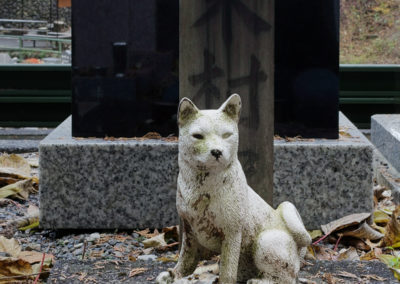
HYEWON KEUM
BIO
Hyewon Keum is an artist based in Seoul, Korea. Her photography work encompasses the observation and interpretation of modern life in urban spaces and underlying social phenomena. Her solo exhibitions have been featured at Artsonje Center and Ilmin Museum of Art, Seoul, Korea. Her works have also been exhibited throughout Korea and internationally, including at Seoul Museum of Art, The Museum of Photography Seoul, Lishui Art Museum, Pyeong Chang Biennale, Nanjing International Art Festival and Seoul Photo Festival. Keum is the winner of the 12th Daum Prize from The Parkgeonhi Foundation of Culture. Her works are part of the permanent collections of The Museum of Photography Seoul, Ilmin Museum of Art, Seoul Museum of Art, National Museum of Contemporary Art (Art Bank) and The Jeju Museum of Art.
ARTIST STATEMENT
My photographic series, Cloud Shadow Spirit, showcases various societal attitudes toward the death of companion animals. I have traveled to Korea, Japan and the United States, shooting photographic images of funeral rites for animals, animal crematories, pet cemeteries, pet columbaria, memorial stones (which are also called ‘angel stones,’ a recent trend in the market), and stuffed companion animals. Both the United States and Japan have their own history of funerals for animals that reaches back almost 120 years. I also chose these two countries because of their significant influence on the funerary culture in Korea, as well as for their diversity and specificity of funeral for animals. Alongside the two countries, I observed Korea, as it has a short history of animal funerals yet is experiencing a rapid growth of demand for such funerals. The sites of processing the deaths of companion animal, attitudes and ways of commemorating the dead, and the wide variation of types of such places and activities are recorded in the process.
The realm of death is usually separated from the realm of life. That attitude is well displayed in commemorating the deceased in spaces such as cemeteries or columbariums. However, people sometimes keep death within the territory of their lives by having taxidermists preserve their pet to place where they will be encountered in their ordinary lives, or by having memorial stones produced to carry around with them.
As I have been observing and recording the special bond between people and their companions, I intend to highlight the ways that such relationships may reveal the solitary quality of life in modern society. I believe the contemporary culture of funeral rites for companion animals is not a subject that is solely related to personal loss and grief but is an issue that should be examined through a comprehensive and sociological perspective.




